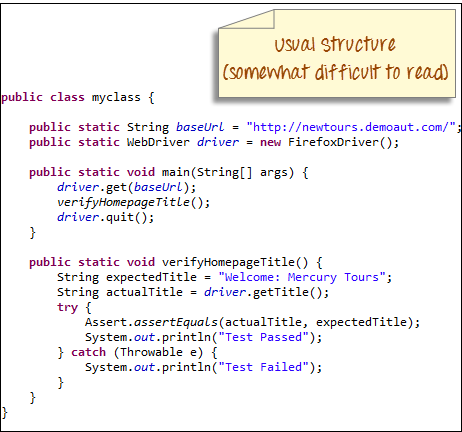

The annotated method will be run after each test method.The annotated method will be run before each test method.The annotated method will be run after all the test methods in the current class have been run.The annotated method will be run before the first test method in the current class is invoked.The annotated method will be run after all the test methods.The annotated method will be run before any test method.The annotated method will be run after all tests in this suite have run.The annotated method will be run before all tests in this suite have run.TestNG can identify each annotated method and execute it through its runner via several different annotations.īelow is the basic set of annotations by TestNG :

TestNG builds atop standard Java Annotations, providing the ability to reuse annotations as syntactic metadata that can be added to any method. TestNG Annotations: Hierarchy annotations:Ī TestNG annotation is a keyword starting with symbol and added before the annotated method. Many of the benefits we’ve discussed with TestNG are dependent on a concept called Annotations. TestNG even allows you to indicate execution priority.Ĭontinuing the example, you would be able to run Sanity tests prior to Regression. If you want to execute the test cases under the Sanity group, then you can do so easily with the TestNG framework. As an example, you can create two groups – ‘Regression’ and ‘Sanity’.

TESTNG ANNOTATIONS HIERARCHY WITH EXAMPLE IN XML FILE SOFTWARE
This is considered best-practice for test suites to ensure our software is running with all possible user inputs. TestNG supports data-driven testing by leveraging data parameterization which allows us to test a piece of software against different inputs as parameters.

In the example above we have a complete test suite abstraction, where we used annotation to annotate GeneralTest and GeneralTest2 as tests. Here’s a simple example of how the annotation can simplify your logic: By using annotations you can define functions as part of the runner without the need to rename them or keep their name common between all tests in the automation suite.Īlso, you can simply pass parameters through these annotations to the functions you annotate. In my 10-years managing an enterprise-grade team of Quality Assurance and CI/CD Engineers, here are the key benefits we’ve realized from switching to TestNG: I will discuss in-depth about preparing your test suite to support parallel execution using TestNG.īut first, let’s discuss the additional benefits TestNG will provide aside from parallel execution. For example moving shared variables from base class to test-level, leveraging thread-local variables, etc. This will require careful review and consideration of how your tests are executed. Updating the test suite logic to be thread-safe in support of parallel execution.A fairly simple exercise of updating the test suite to run within the TestNG framework.Before you Get Started with TestNGĪssuming you have an existing test suite you’ll want to convert to TestNG to take advantage of parallel execution, the conversion of your existing test suite for use with TestNG can be considered a two-part effort: In this blog post I discuss how your organization and clients can realize this benefit and many others using TestNG. Leveraging parallel testing via TestNG has allowed us to reduce execution time by 50%, saving time and money for both our team and clients. With parallel execution in TestNG, you can significantly reduce execution time and better validate real-world scenarios by simulating parallel traffic no site has just one visitor at a time. Since the inception of automated testing we’ve seen many platforms and iterations, each with their own unique set of pros-and-cons however, a common issue regardless of the platform has been an inherently slow execution as tests had to be executed linearly.Įnter TestNG, the next-generation testing framework which solves this long-standing performance problem by providing the ability to execute tests in parallel.


 0 kommentar(er)
0 kommentar(er)
